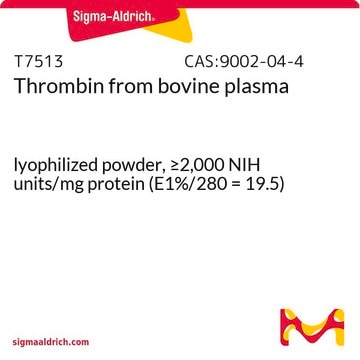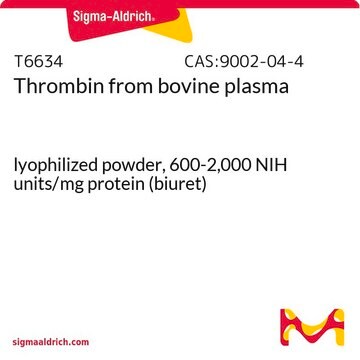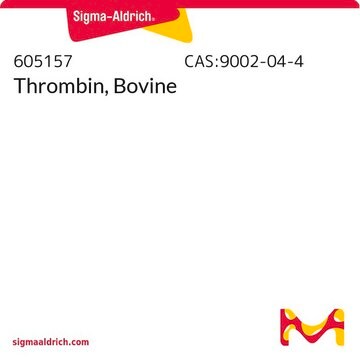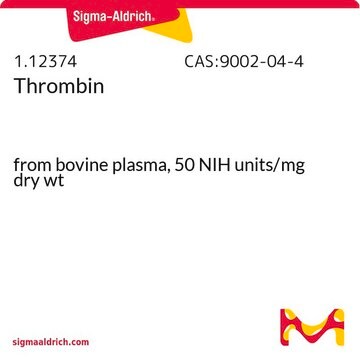T9549
Thrombin from bovine plasma
powder, suitable for cell culture, ≥1,500 NIH units/mg protein (E1%/280 = 19.5)
Synonym(s):
Factor IIa
About This Item
Recommended Products
form
powder
specific activity
≥1,500 NIH units/mg protein (E1%/280 = 19.5)
mol wt
heavy chain ~31 kDa
light chain ~6 kDa
technique(s)
cell culture | mammalian: suitable
UniProt accession no.
shipped in
dry ice
storage temp.
−20°C
Gene Information
cow ... F2(280685)
Looking for similar products? Visit Product Comparison Guide
General description
Application
Biochem/physiol Actions
Unit Definition
Reconstitution
Analysis Note
Other Notes
inhibitor
signalword
Danger
hcodes
Hazard Classifications
Eye Irrit. 2 - Resp. Sens. 1 - Skin Irrit. 2 - STOT SE 3
target_organs
Respiratory system
Storage Class
11 - Combustible Solids
wgk_germany
WGK 2
flash_point_f
Not applicable
flash_point_c
Not applicable
Choose from one of the most recent versions:
Already Own This Product?
Find documentation for the products that you have recently purchased in the Document Library.
Customers Also Viewed
Our team of scientists has experience in all areas of research including Life Science, Material Science, Chemical Synthesis, Chromatography, Analytical and many others.
Contact Technical Service














